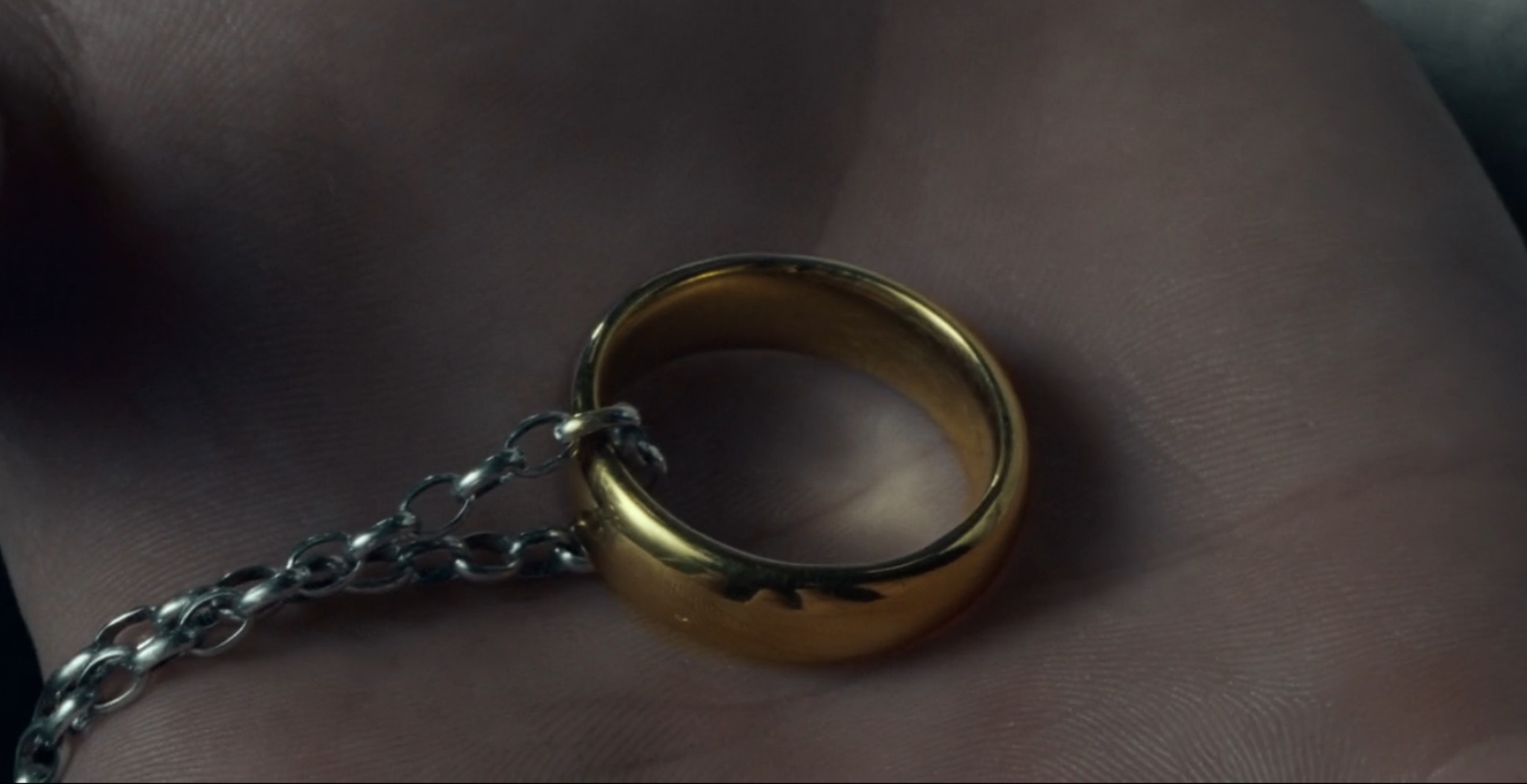
In “The Lord of the Rings,” the central plot revolves around a mysterious artifact known as the One Ring, but its complete power and abilities remain largely unexplored throughout the narrative. The movies suggest that Sauron crafted the ring to dominate the other rings of power held by various races like humans, elves, and dwarves. However, the specific powers bestowed upon those who wear these rings are left ambiguous. This enigma is heightened as ordinary hobbits Bilbo and Frodo Baggins possess the ring for much of the tale, their abilities being relatively modest compared to what we might expect from such a powerful artifact. If you’ve ever pondered the true nature of this famous prop, keep reading for more insights.
In the tale known as “The Hobbit”, Bilbo Baggins first encountered the enigmatic One Ring during a riddle-playing contest against the subterranean creature Gollum. Initially, it was just a mystical bauble that proved useful when Bilbo had to infiltrate the lair of the dragon Smaug as a burglar. However, author J.R.R. Tolkien chose to expand its importance in his subsequent three-part series, “The Lord of the Rings”. This expansion required what we now call retcons, and even necessitated the reprinting of “The Hobbit” to reflect these changes.
The Ring on Hobbits

In essence, Bilbo’s magical ring makes him disappear when needed. Later on, we find out that not only did it help prolong his life and vigor, but this benefit isn’t guaranteed for others. Similarly, Frodo’s ring also provides invisibility, and it was said to improve his eyesight. For Samwise Gamgee, the ring seemed to heighten his senses, particularly his hearing, although in Mordor, he felt it attracted attention instead of rendering him invisible.
Typically, whoever dons the ring experiences heightened senses, increased longevity, and improved natural abilities. However, a significant drawback accompanies this privilege – the wearer becomes susceptible to Sauron’s control, gradually succumbing to his influence and being driven to return the ring to its master. Fortunately, Hobbits possess an innate resistance to such corruption, which is why Gandalf entrusted the ring to Frodo, eventually assigning him the mission of bringing it to Mount Doom.
Gandalf himself doubts if he or any other mortal could withstand the temptation of the ring’s corruption. Essentially, the ring’s power is too great for a human, dwarf, elf, or any other creature with a finite lifespan to wield without being corrupted by Sauron. However, hobbits are so humble that they struggle to comprehend the allure of such immense power. This is why Bilbo was able to keep the ring for many years and Frodo managed to carry it to Mount Doom, despite their suffering greatly from its influence.
The Ring on Sauron

Sauron made the One Ring primarily to dominate all other rings of power, yet his plan didn’t go as smoothly as he intended. Instead of fully controlling the nine human kings, he transformed them into wraith-like entities known as ringwraiths. However, the three elven bearers of rings managed to conceal their rings before they could be tainted by Sauron’s influence. Over time, the seven dwarven rings were misplaced, but it was said that three of them belonged to a dwarf king during Frodo’s quest. Unlike others, this particular dwarf wasn’t corrupted.
As a passionate cinephile, I’d rephrase it this way: After my ethereal form was shattered during the downfall of Númenor, the ring served as a means for me to regain a corporeal existence. Without the ring, I couldn’t manifest in a physical state, making it an essential tool in my quest throughout the main storyline. By then, a significant portion of my power had been channeled into the Ring, making it crucial for my restoration to full strength in its entirety.
The Ring on Others

Strong magical entities steer clear of the Ring, recognizing its corruptive influence. Gandalf and Galadriel decline it, regarding resistance as a crucial trial for their mortal existence. However, in this universe, one enigmatic magical being, Tom Bombadil, perplexes fans by effortlessly withstanding the Ring’s corruption. This mysterious woodland guardian was omitted from film adaptations to prevent confusion.
Soft Magic
In essence, the story delves into the powers of the One Ring, yet it never definitively sets its bounds and extent. This kind of magical system in a narrative is referred to as a “flexible” or “soft” one, offering writers room for creativity and future plot development. Conversely, a “rigid” or “hard” magic system, such as the elemental powers in Avatar The Last Airbender or those crafted by author Brandon Sanderson, has clearly defined rules and limitations. Frequently, Tolkien’s writing is cited as the epitome of a soft magic system in literary analyses.
As an ardent fan, I’m thrilled to share that the epic trilogy known as “The Lord of the Rings” is currently streaming on Max, and so is the captivating “The Hobbit” trilogy. If you haven’t already, delve into J.R.R. Tolkien’s enchanting world through print, digital, or audiobook formats. For a deeper understanding of the ring’s origins and its intricate role, I highly recommend checking out the appendices or even “The Silmarillion”. Enjoy the journey!
Read More
- Solo Leveling Season 3: What You NEED to Know!
- Rachel Zegler Claps Back at Critics While Ignoring Snow White Controversies!
- OM PREDICTION. OM cryptocurrency
- Captain America: Brave New World’s Shocking Leader Design Change Explained!
- Oblivion Remastered: The Ultimate Race Guide & Tier List
- Oshi no Ko Season 3: Release Date, Cast, and What to Expect!
- Gold Rate Forecast
- Meta launches ‘most capable openly available LLM to date’ rivalling GPT and Claude
- Fantastic Four: First Steps Cast’s Surprising Best Roles and Streaming Guides!
- How to Get to Frostcrag Spire in Oblivion Remastered
2025-01-21 05:10